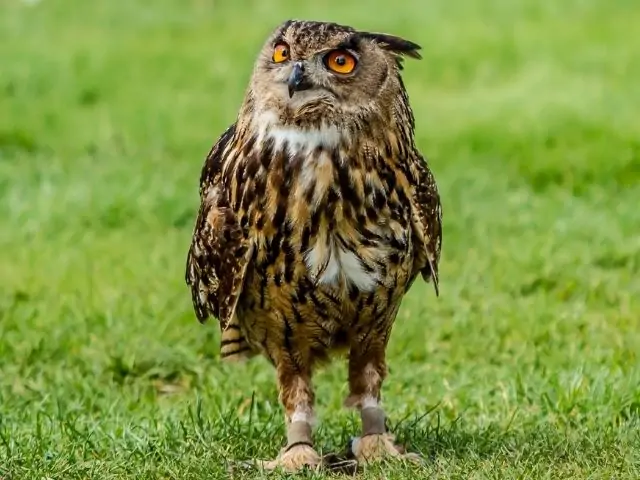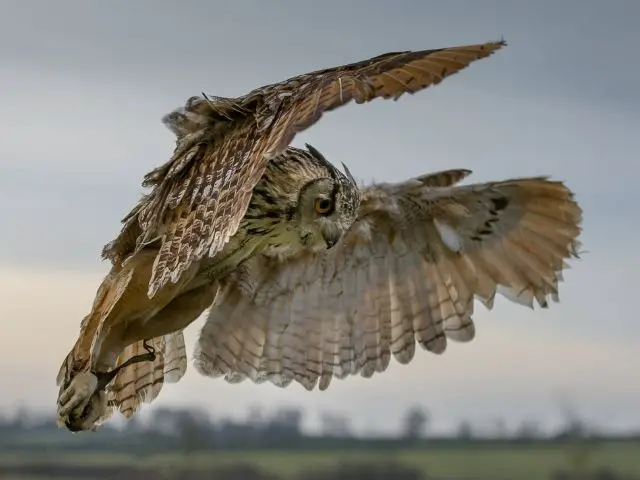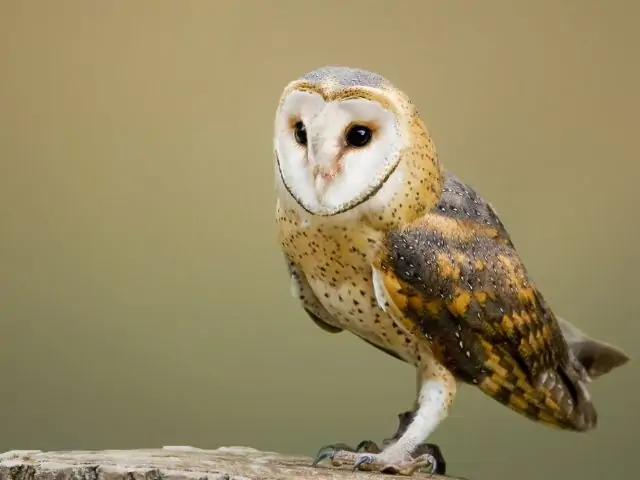Your eyes are definitely not deceiving you.
But, really… Why?
Owls are typically seen as majestic, but beneath those feathers lie skinny and long legs.
There are many funny pictures on the Internet of owls’ legs because they are usually hidden, so seeing how long they are is quite unexpected and amusing.
You may be wondering, “Why are their legs so long?”
It turns out, their legs aren’t just there to look funny - they are also used for survival. If you want to find out how you’re at the right place because we’re here to explain the anatomy and function of an owl’s legs.
Anatomy Of The Legs

In general, birds have pretty long legs because the leg bone, known as tibiotarsus, is the longest bone in a bird's body.
Like in humans, their legs consist of feet, toes, knees, and other bones similar to the human body.
Other elements that also vary are the leg structure and whether it is bare or feathered. These features typically depend on the habitat and behavior of the bird.
For example, hummingbirds have short legs to reduce their weight, making it easier to feed on nectar. On the other hand, terrestrial birds, such as the Burrowing Owl, have strong and long legs because they tend to walk or run over sandy and rocky terrain.
When it comes to owl species, their legs are long and skinny, ranging from 20 to 30 centimeters long. They are also often covered by plumage, which is why we can only see their feet.
However, some species, such as the Barn Owl, have their legs exposed.
Thus, they need strong and long legs. However, an owl's legs serve other purposes, which will be discussed in the next section.
What Are Owl Legs Used For?
Hunting And Attacking
Despite the funny pictures all over the Internet, owls are ferocious predators. They use their sharp eyes and ears, silent flight, and strong talons to capture prey.
Owls only use their beaks for eating, so their primary weapon for hunting is their talons. Apart from insects, small mammals, and small birds, owls can surprisingly hunt larger prey such as young deer.
Their talons are known to be strongest among the birds of prey, capable of exerting about thirty (30) pounds of pressure.
Because of their hunting behavior, they need strong legs to propel their talons. Their leg muscles also determine their grip strength, which is essential to keep prey from breaking free.
When the owl finds its prey, it flies after the target head-first before stretching out its talons to attack. Swooping is best demonstrated by the Barn Owl in the image below.

When owls swoop, having long legs is essential because the extended reach allows them to catch accurately.
For species that also hunt on the ground, such as the Burrowing Owl, long legs allow them to sprint over grasslands, thus enabling them more to catch prey, like ground squirrels and such.
Once they successfully capture prey, owls use their leg and talon strength to stab and strangle it. Sometimes, they also use their beaks to deal with additional blows.
Talk about a total beatdown!
Apart from being deadly, attacking with talons is also a safe way to hunt because it protects the owl's head and eyes if the prey fights back. This is particularly crucial for hunters that use binoculars to search for food.
Flying
The long and slender structure of an owl's legs is also beneficial for flight.
The large muscles of the upper leg are closely compacted to the owl's body, while the outer extremities, such as the feet, are light and bony. This centralizes the owl's weight distribution, providing more balance during flight.
Protection
Apart from weight centralization in flight, the structure of the owl's legs is also helpful for survival, especially for owls that live in cold environments such as the Snowy Owl or the Great Gray Owl.
Since the outer extremities of the leg are light and bony, owls can keep their feet and toes cold without losing their function or suffering from frostbite.
Among the owl species, the Great Gray Owl takes insulation to the next level. Each feather is so thick and wide that its actual body shape and size are hidden, exposing only its eyes and toes. Seeing its long legs becomes more amusing because you don't even see it coming!
Fun Fact: Owls have been with us for centuries and all information regarding them is available on the net. But do you know anything about owl symbolism and spirit animal relevance? Read on!
Frequently Asked Questions
What Do You Call An Owl's Legs?
There's no official name for it, so you can simply call them owl's legs. However, a bird's leg is scientifically referred to as tibiotarsus.
Which Owl Has The Longest Legs?
Not much is known about the owl with the longest legs, but it is thought to be the Eurasian Eagle-Owl, also known as the Bubo bubo.
Apart From The Legs, What Makes Owls Amusing?
It would definitely be the head bobbing. Although it's cute, owls do this to see things around them by increasing their depth perception.
Watch this amusing video of Baby Great Horned Owl head-bobbing:
If you take a close look at an owl’s foot, you would notice how non-proportional it is to their long legs, which may not be that obvious without their feathers covering it.
The Bottom Line
There are many reasons we love owls - they are majestic birds who are also fierce hunters. On the flip side, they are also quite amusing because of their surprisingly long legs.
However, these long legs make evolutionary sense. They help an owl hunt for food, and their structure is beneficial for flight and surviving cold weather.
Seeing an owl is already rare enough, but seeing its legs in action is even rarer! We definitely won’t be looking at owls the same again.
Nevertheless, we hope this article helped you get closer to these lovable birds!


